Six Animal Aggregation Dives to Add to Your Scuba Bucket List
Many divers dream of seeing rare animals such as hammerhead sharks, manta rays and cuttlefish on a dive. But with careful planning and sometimes a bit of luck, some divers will get the chance to see hundreds or even thousands of them underwater at once.
Some parts of the ocean are hotspots for animal aggregations — when species gather to spawn, feed, and otherwise socialize — and most of these areas are prime for scuba diving as well. Read on to find out more about where and when to dive with six unique species schooling en masse.
1. Cuttlefish
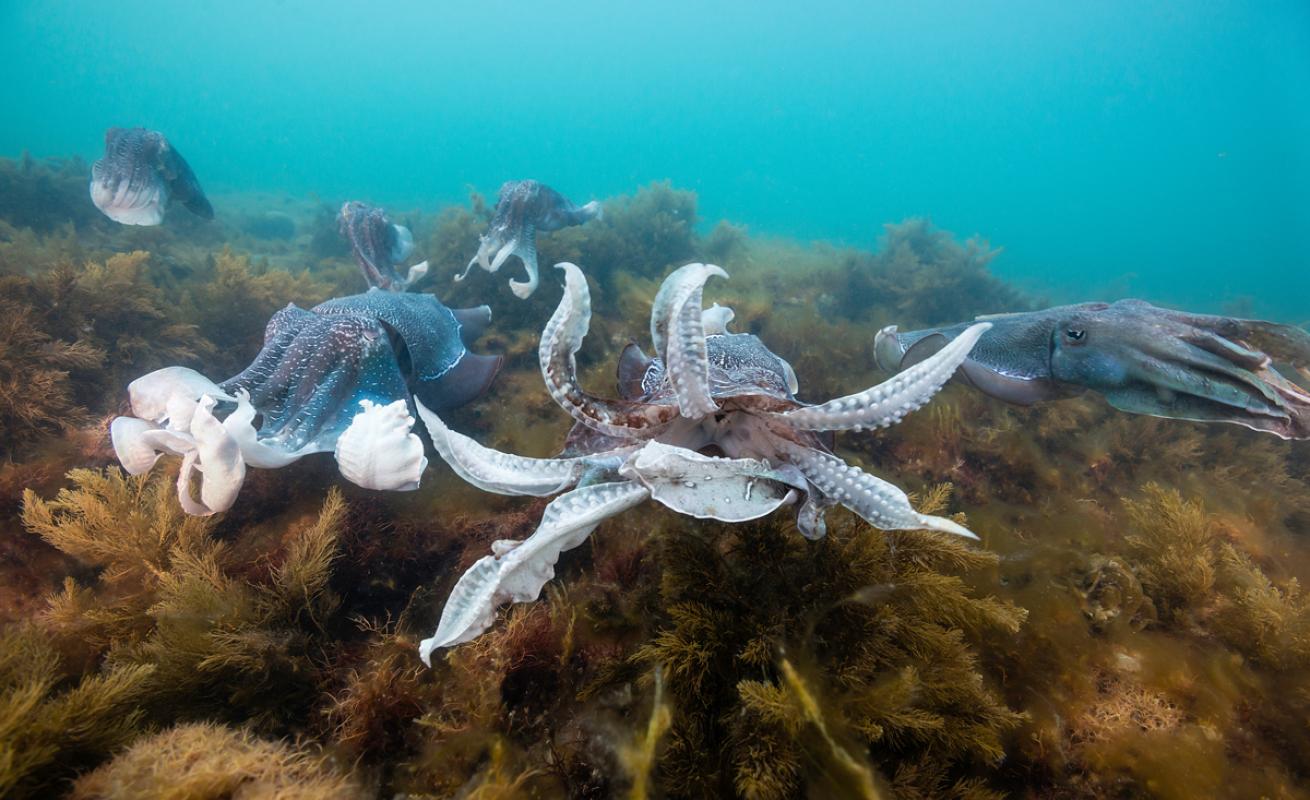
wildestanimal/Shutterstock.comGiant Australian cuttlefish gather during the mating and migration season in South Australia.
Between May and August, thousands of giant Australian cuttlefish aggregate off the coast of Whyalla, South Australia. In fact, at peak season, there are up to 10,000 cuttlefish in the waters at once. Whyalla is the only place in the world they’re known to gather in such large numbers, and they only do so to mate.
During the mass aggregation, the ratio of males to females is about 8-to-1, so the pressure of courtship is in full swing. Males display spectacular colors to entice their mates but are rejected more often than not. While this is unfortunate for the rejected cuttlefish, it’s a dazzling sight for divers who are lucky enough to witness it.
2. The Sardine Run
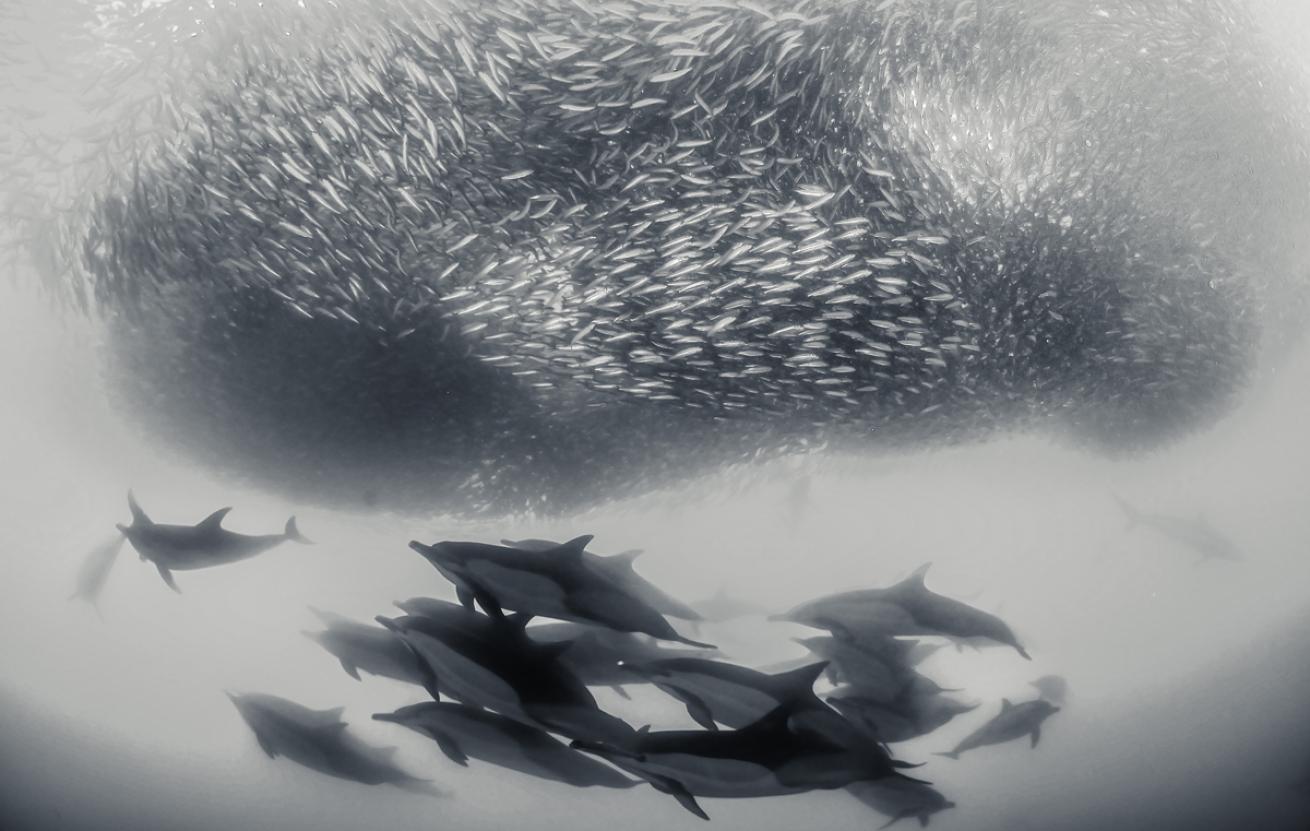
wildestanimal/Shutterstock.comCommon dolphins working together as a team to round up sardines into a bait ball so they can feed on them. Image was taken during the annual sardine run, Wild Coast, South Africa.
The Sardine Run, which happens from May to July off the southeastern coast of South Africa, is an aggregation of many species: hundreds of blacktip, copper and spinner sharks; thousands of Cape gannet birds; tens of thousands of bottlenose and common dolphins; and, of course, billions of sardines.
The sardines’ annual winter migration into the waters of KwaZulu-Natal is beat almost every other marine species’ in terms of size, and the massive shoals attract predators of all kinds. However, for divers hoping to experience the feeding frenzies up close, patience is key. It can be difficult to pinpoint bait balls and time dives — some underwater photographers must spend weeks in South Africa each year in order to get their perfect shot.
3. Scalloped Hammerhead Sharks
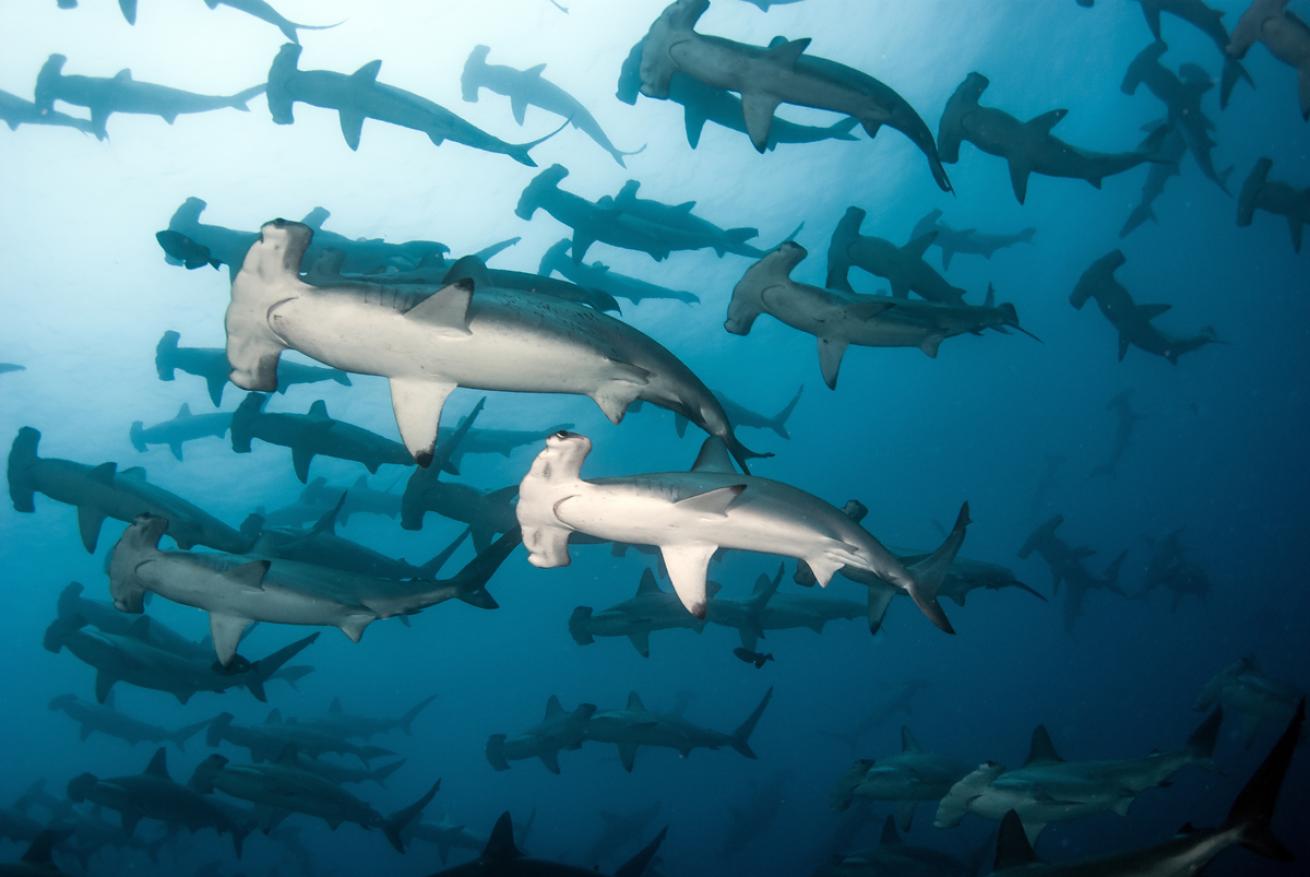
Tomas Kotouc/Shutterstock.comSchool of scalloped hammerheads.
Scalloped hammerheads are some of the most elusive sharks in the sea, but there are a few places where you can see schools of them year-round, such as Cocos Island, Costa Rica.
Hundreds of hammerhead sharks can be circling Cocos at any given time in any given season, although scientists don’t believe individuals stay at the island constantly throughout the year. More likely, scientists say, they move between Cocos and other oceanic islands including the Galapagos and Malpelo.
It’s no easy feat to get out to Cocos, some 300 miles from mainland Costa Rica. But those who brave the 36-hour journey out are surely in for a toothy treat.
4. Manta Rays
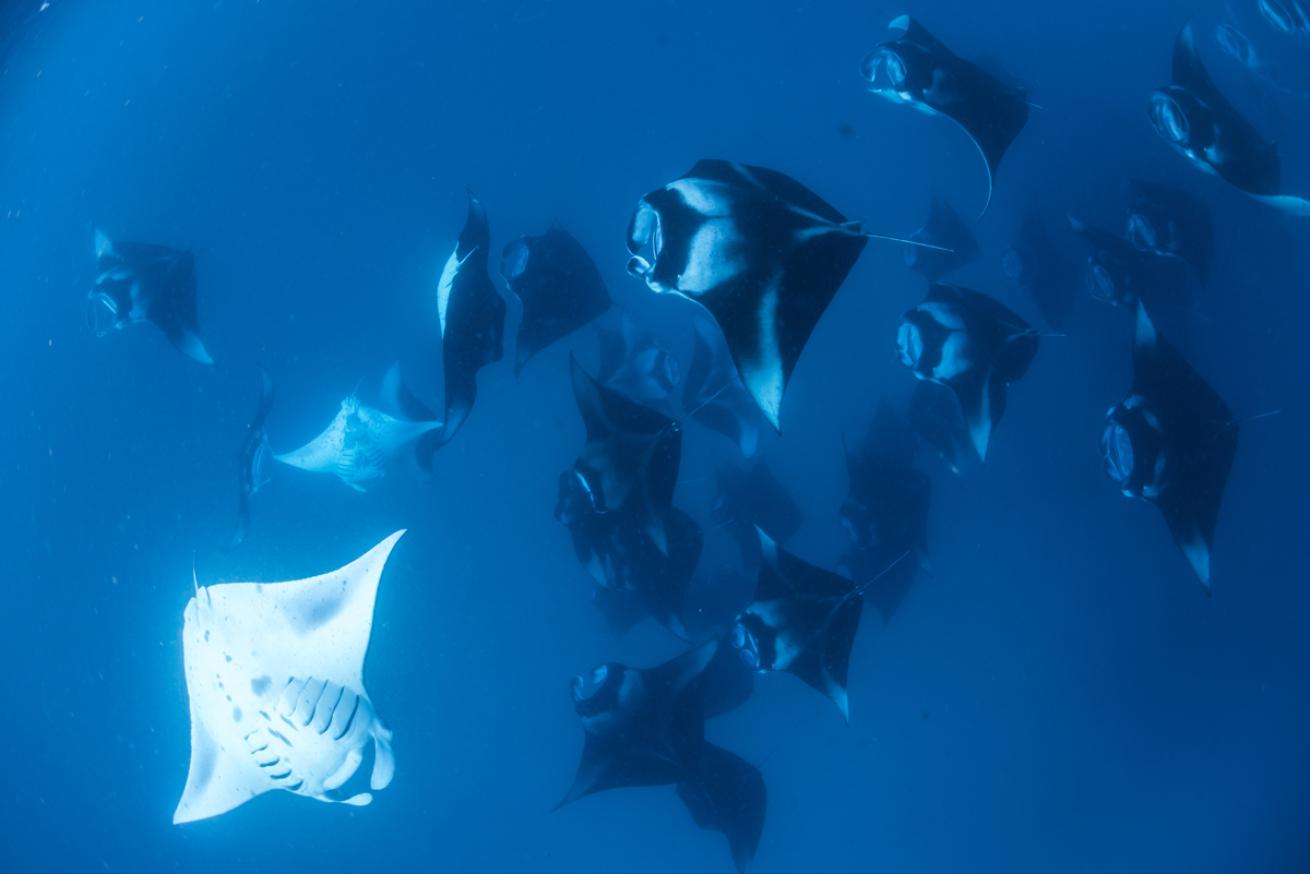
divedog/Shutterstock.comManta rays circle in the Maldives.
From the surface, the tiny island of Hanifaru in Baa Atoll, Maldives, looks like just another unassuming patch of sand. Beneath the waves, however, it’s anything but ordinary. The waters of Hanifaru Bay are a breeding ground for species like grey sharks and stingrays, and they’re also home to one of the largest manta aggregations in the ocean.
Between May and November, manta rays flock to Hanifaru Bay by the hundreds, hungry to feed on the hordes of plankton that are funneled through various channels and end up in the bay during the southwest monsoon. Divers come from across the world to see the mantas “cyclone feeding,” or whirling in a spiral to round up plankton and then feeding at once.
5. Goliath Grouper
Goliath grouper didn’t earn their name for anything. These massive fish can weigh over 800 lbs and grow more than eight feet long — about the size of a Smart car or vintage Volkswagen Beetle — and are known to cause a traffic jam each year off the coast of Palm Beach County, Florida.
Between August and October, hundreds of goliath grouper gather to spawn in the waters of the Sunshine State. Although their size makes it hard for them to hide, finding the large schools of these grouper can be difficult. They typically only congregate around a handful of sites, such as deep wrecks and reefs, so divers must have the proper experience to see them firsthand.
6. Bumphead Parrotfish
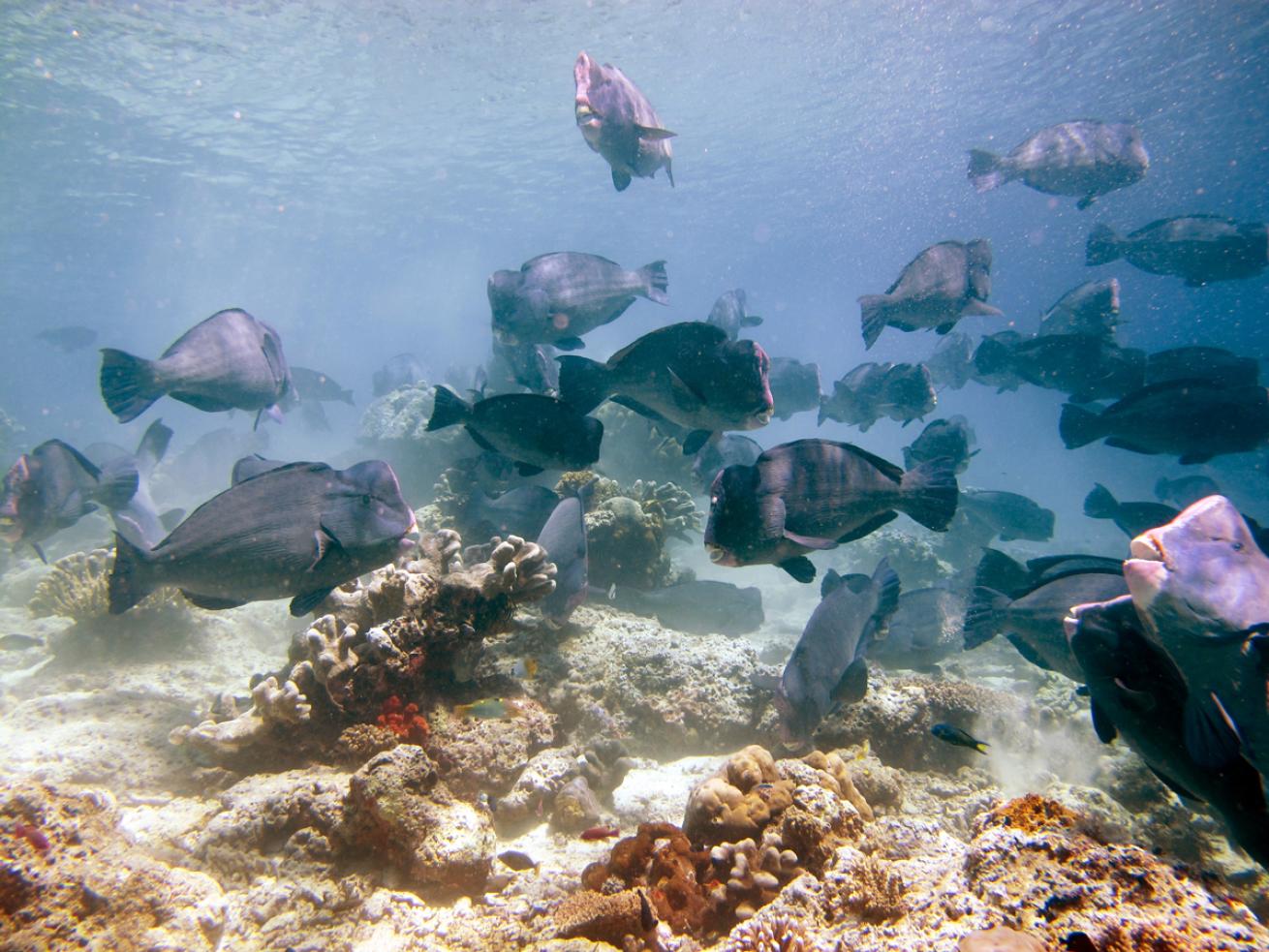
Marjan Schmit Visser/Shutterstock.comSchool of bumphead parrotfish on the reef.
Time your trip to Palau’s Rock Islands around the new moon and you just may encounter the unique phenomenon of bumphead parrotfish spawning. To start the mating ritual, male parrotfish butt heads with one another and change color to assert dominance. Then, it becomes all about the thrill of the chase. Females dart from the deep blue water up to the surface while males follow in hot pursuit, each releasing their gametes into the water column for fertilization.
Scientists theorize that this allows the females to find the strongest, fastest fish to mate with — something that’s all but necessary when there are about 1,000 suitors to choose from.










